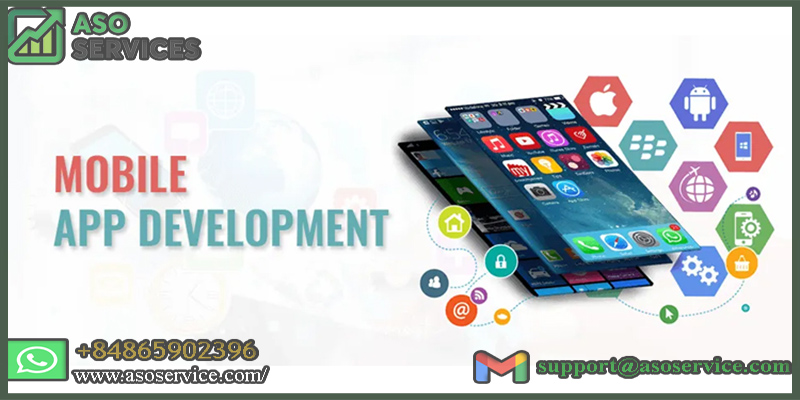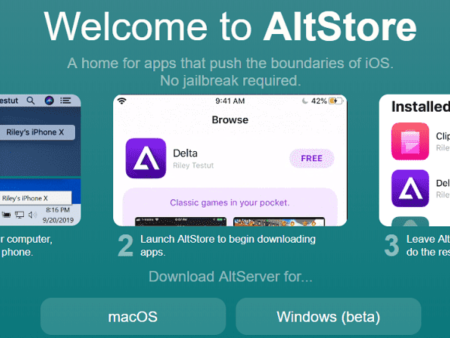Mobile app development constantly evolves, with new technologies and trends emerging yearly. Staying up-to-date with the latest best practices and tools is essential to building successful and engaging mobile apps in 2023.
Related posts
Boost Your App's Success with These Top ASO Tools And Techniques
A Comprehensive Guide to Keyword Research For ASO
1. User Experience (UX) and Design of Mobile App Development
User experience (UX) and design are critical aspects of mobile app development and can significantly impact user engagement and retention. This topic will explore the best practices and critical considerations for creating an exceptional user experience in mobile app design.
User-Centered Design
Conducting user research to understand user's needs and preferences
Creating user personas and user journeys to guide design decisions
Intuitive Navigation and Usability
Designing clear and consistent navigation
Minimizing user effort by reducing the number of clicks or steps needed to complete tasks
Prioritizing essential features and content to improve the usability
Visual Design and Branding
Creating a visually appealing and engaging interface
Ensuring consistency with the brand's visual identity
Designing for different device sizes and resolutions

User Experience (UX) and Design of Mobile App Development, Source: Asoservice.com
Accessibility and Inclusivity
Ensuring that the app is accessible to users with disabilities
Designing for diverse user needs and preferences
Complying with accessibility guidelines, such as WCAG 2.1
Performance and Speed
Optimizing app loading speed and performance
Minimizing the app's memory and battery usage
Implementing caching and other performance optimization techniques
User Feedback and Iteration
Incorporating user feedback into design decisions
Iterating and improving the app based on user feedback and usage data
Implementing analytics tools to track user behavior and identify areas for improvement.
2. Cross-Platform Development
Cross-platform development is a rapidly growing trend in mobile app development. With minimal effort and cost, businesses and developers seek to create mobile apps that can run on multiple platforms, such as iOS and Android. This approach offers several benefits, including reduced development time, cost efficiency, and ease of maintenance.
With cross-platform development frameworks: React Native, Flutter, and Xamarin, developers can create mobile apps that work on multiple platforms with the same codebase, which means they don't have to write different code for each platform.
Another advantage of cross-platform development is its ease of maintenance. With cross-platform development, developers can make changes and updates to the app's codebase and user interface, which will be reflected on all platforms simultaneously. This saves time and effort on maintenance, as developers don't have to make changes and updates to each platform separately.
However, cross-platform development also has some drawbacks. One of the most significant drawbacks is performance. Cross-platform apps may not perform as well as native apps, as they may be slower and less responsive. This can negatively impact user experience and satisfaction, ultimately impacting user retention and revenue.
Another challenge with cross-platform development is platform-specific considerations. While cross-platform development frameworks can make it easier to develop for multiple platforms, developers still need to consider the unique characteristics of each platform and optimize the app accordingly.
In conclusion, cross-platform development is a powerful approach to mobile app development that can offer significant benefits in terms of time and cost efficiency. You can read macOS app reviews for more information.
3. Mobile App Security of Mobile App Development
Mobile app security is essential to mobile app development, as it protects user data and prevents malicious attacks that can compromise the app and its users. This topic will explore the importance of mobile app security and the best practices for ensuring secure mobile app development.
Authentication and Authorization
Overview of authentication and authorization methods in mobile app security
Best practices for implementing secure authentication and authorization, such as password policies, multi-factor authentication, and role-based access control
Considerations for implementing secure authentication and authorization in different types of mobile apps, such as enterprise apps and consumer apps
Secure Network Connections
Best practices for secure network connections in mobile apps, such as secure socket layer (SSL) and virtual private networks (VPN)
Considerations for implementing secure network connections in different types of mobile apps, such as gaming apps and messaging apps
Mobile App Testing and Security Assessment
Best practices for mobile app testing and security assessment, such as penetration testing and code review
Considerations for selecting mobile app testing and security assessment tools and services
Best practices for integrating mobile app testing and security assessment into the mobile app development process
Emerging Mobile App Security Trends and Developments
Overview of emerging mobile app security trends and developments, such as biometric authentication and blockchain technology
Implications for future mobile app security strategies and considerations
Best practices for staying up-to-date with mobile app security trends and developments.
4. Cloud Technologies of Mobile App Development
Cloud technologies have become increasingly important in mobile app development, providing various benefits such as scalability, flexibility, and cost-efficiency. This topic will explore the importance of cloud technologies in mobile app development and the best practices for leveraging these technologies to create high-performing, scalable mobile apps. You can read Google ratings to know more about cloud technologies.
Cloud Architecture and Infrastructure
Overview of cloud architecture and infrastructure in mobile app development
Best practices for selecting cloud platforms and services based on app requirements, such as scalability, security, and data storage
Considerations for designing and implementing cloud infrastructure for different types of mobile apps, such as gaming apps and e-commerce apps
Cloud-Based Mobile App Development Tools and Services
Best practices for leveraging cloud-based mobile apps development tools and services, such as cloud-based IDEs and app builders
Considerations for selecting and integrating cloud-based development tools and services into the mobile app development process
Best practices for leveraging cloud-based services for mobile app testing, such as automated testing and load testing
Cloud-Based Mobile App Deployment and Management
Best practices for leveraging cloud-based mobile app deployment and management tools and services, such as cloud-based mobile device management (MDM) and app distribution services
Considerations for selecting and integrating cloud-based deployment and management tools and services into the mobile app development process
Best practices for leveraging cloud-based deployment and management for app performance monitoring and user feedback
Cloud-Based Security and Compliance
Best practices for leveraging cloud-based security and compliance tools and services, such as cloud-based identity and access management (IAM) and compliance certifications
Considerations for selecting and implementing cloud-based security and compliance for different types of mobile apps, such as financial apps and healthcare apps
Best practices for leveraging cloud-based security and compliance for app data protection and user privacy
5. Artificial Intelligence and Machine Learning
AI is a branch of computer science that can perform tasks wih typically require human intelligence. ML is a subset of AI that teaches machines to learn from data without being explicitly programmed.
Applications of AI and ML
Overview of the various applications of AI and ML, such as natural language processing, computer vision, and predictive analytics
Examples of how AI and ML are being used in various industries, such as healthcare, finance, and manufacturing
Discussion of how AI and ML are being used to automate repetitive tasks and improve decision-making processes
Benefits of AI and ML
Discussion of the various benefits of AI and ML, such as increased efficiency, cost savings, and improved accuracy
Examples of how AI and ML can help businesses and organizations to understand better and serve their customers
Discussion of how AI and ML can help to create new products and services that were previously impossible
Challenges of AI and ML
Discussion of the challenges and limitations of AI and ML, such as data bias and ethical concerns
Examples of how AI and ML can perpetuate biases and lead to unfair outcomes
Discussion of how to mitigate these challenges and ensure that AI and ML are used ethically and responsibly
Future of AI and ML
Discussion of the potential impact of AI and ML on the future of work and society
Examples of how AI and ML could transform various industries and create new opportunities
Discussion of how to prepare for and adapt to the changes brought about by AI and ML
In conclusion, AI and ML are rapidly advancing technologies transforming various industries and changing how we live and work. While there are challenges and limitations, the benefits and potential of AI and ML are significant, and it is essential to continue to explore and develop these technologies responsibly and ethically.
6. App Store Optimization (ASO)
App Store Optimization (ASO) is improving the visibility and ranking of mobile apps in the app stores. In today's highly competitive app market, ASO has become critical to mobile app development and marketing strategies.
Importance of ASO
Overview of why ASO is important for mobile app success
Discussion of how ASO can help to increase app downloads, user engagement, and revenue
Examples of how ASO can help to differentiate apps from competitors and improve brand recognition
Elements of ASO
Discussion of the various elements of ASO, such as app title, description, keywords, and visuals
Explanation of how each element can impact app visibility and ranking in the app stores
Examples of best practices for optimizing each ASO element
ASO Tools
Discussion of the various ASO tools available for mobile app developers and marketers
Overview of how these tools can help to analyze app performance, track app store rankings, and optimize ASO elements
Examples of popular ASO tools, such as Sensor Tower, App Annie, and Mobile Action
ASO Trends
Discussion of the latest ASO trends and strategies
Overview of how AI and machine learning are being used to improve ASO performance
Examples of how voice search and app indexing are impacting ASO
ASO is crucial to mobile app development and marketing strategies. By optimizing ASO elements and leveraging ASO tools and trends, mobile app developers and marketers can improve app visibility, increase downloads, and drive user engagement and revenue.
Conclusion
In conclusion, staying up-to-date with the latest best practices, tools, and trends in mobile app development is essential for success in 2023 and beyond. By embracing emerging technologies, prioritizing user experience and security, and optimizing app store visibility, mobile app developers can create innovative, high-performing apps that meet the evolving needs of users and drive business growth.
Related posts
https://asoservice.com/increase-app-installs-from-google-ads
https://asoservice.com/google-reviews
Thanks so much for reading this article.
Source: https://asoservice.com/














Leave a Reply
Your e-mail address will not be published. Required fields are marked *